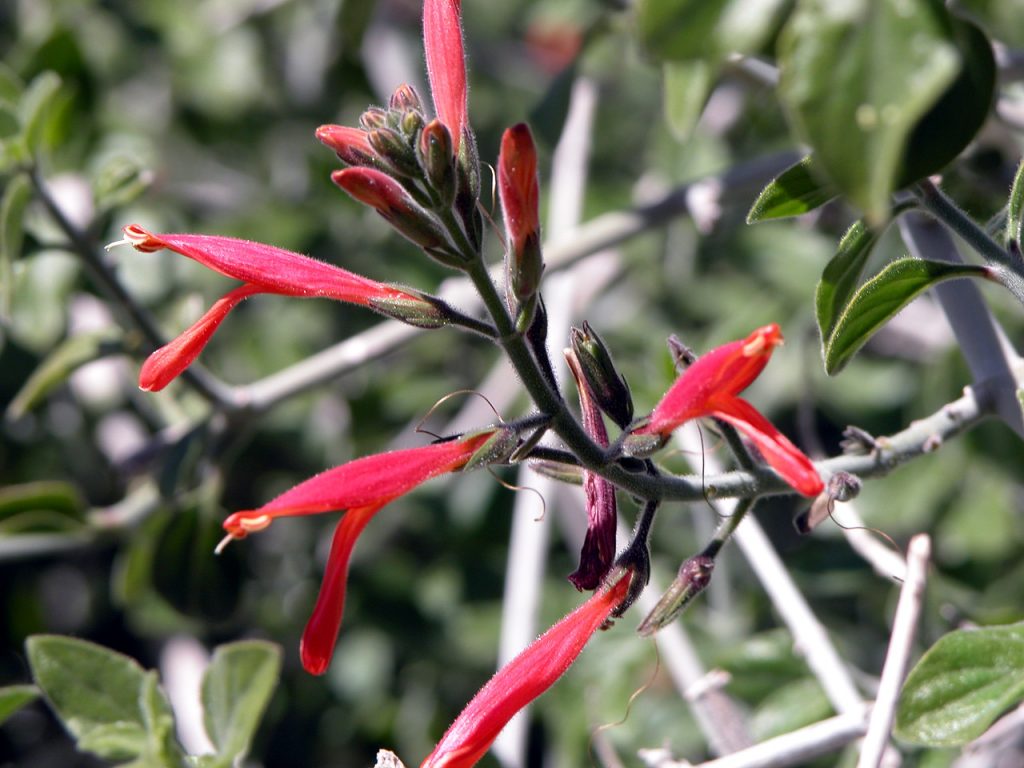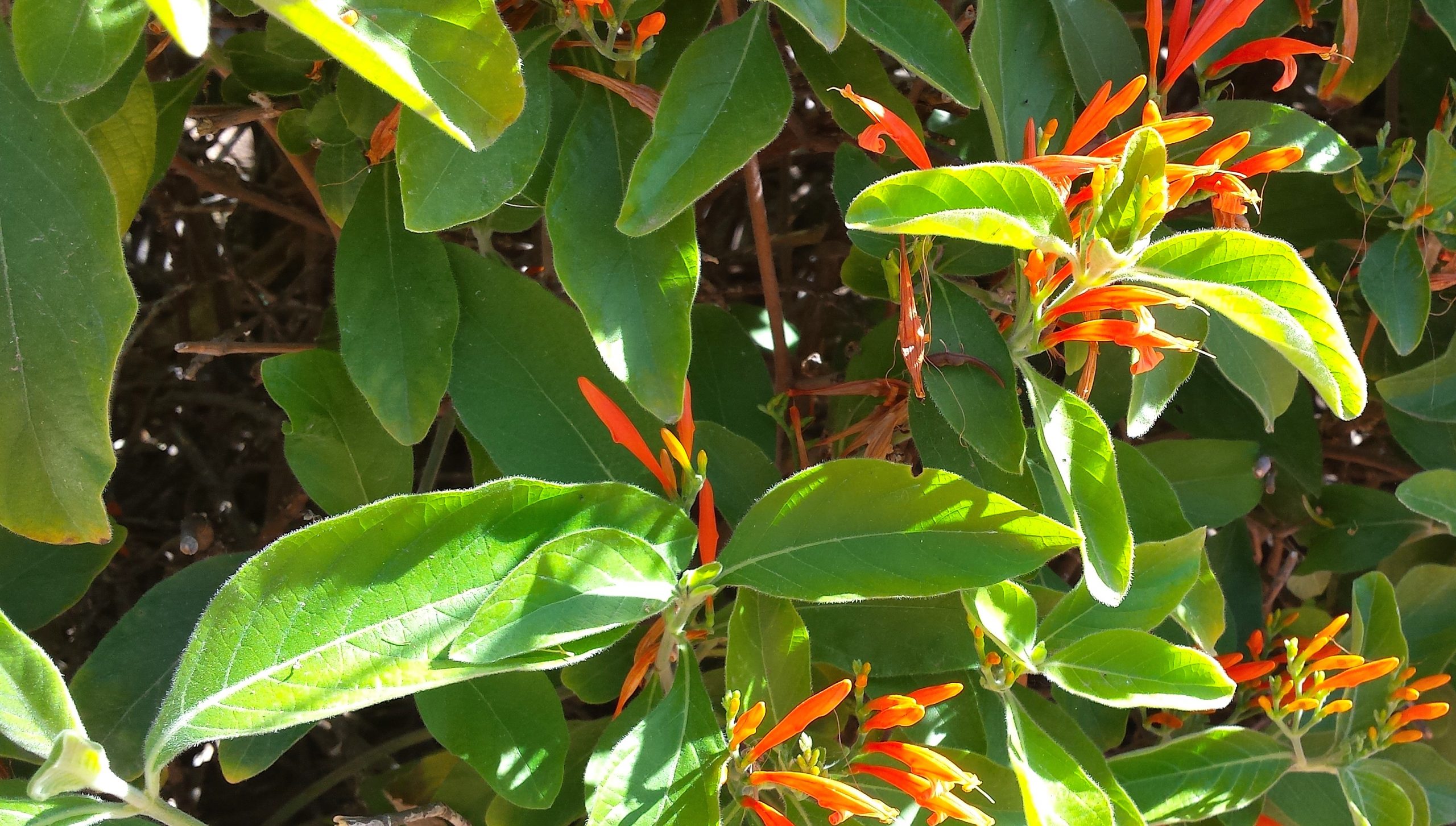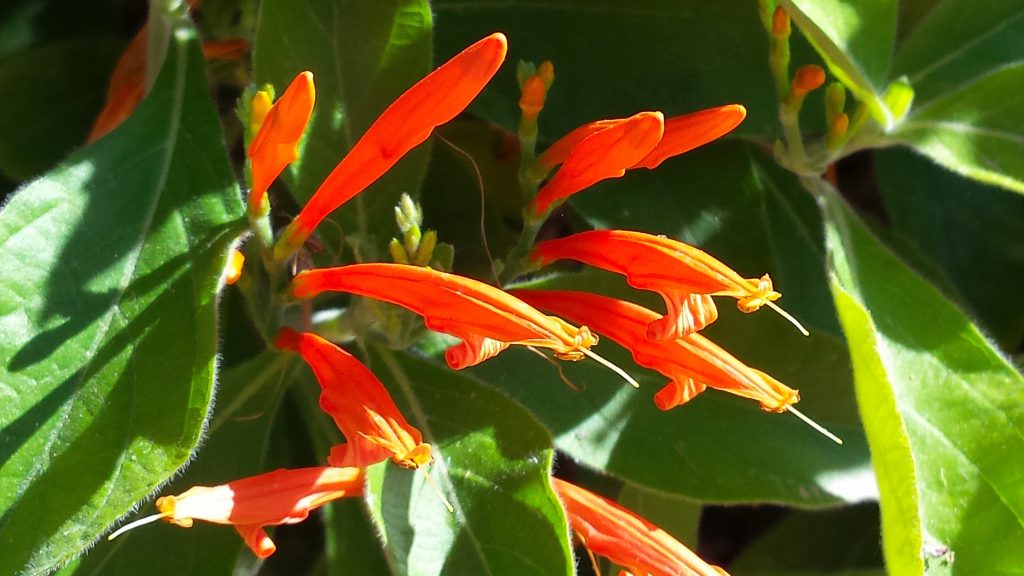A different kind of flower this Valentine’s season. With long, colorful, tubular flowers, justicias are a hummingbird’s delight. Flower colors range from yellow to deep red. Justicias’ green foliage contrasts well with gray desert plants. Native to tropical and subtropical regions, they can be used in many types of landscapes. These semi-evergreen shrubs bloom throughout the year, inviting hummingbirds into the urban wildlife garden.
If plants are damaged by frost, become leggy, or have reduced flower production, they may be rejuvenated by pruning to the ground after the last frost in early spring. They recover rapidly in warm weather and flourish with infrequent, deep watering.

Justicia californica, Chuparosa
The name chuparosa, Spanish for hummingbird, gives testimony to this shrub’s attraction to hummingbirds. Native to the Sonoran Desert, it is wonderfully adapted to Xeriscape gardens for color and wildlife. Growing up to 6 feet tall and 6 feet wide, it can fill a large space. Intense red flowers, or lemon yellow in some forms, are one of its best features, especially during its fall through spring blooming period. Unlike most semi-evergreens, chuparosa is summer deciduous. It can survive on rainfall alone in natural desert areas, but maintains a more evergreen appearance with supplemental water during extended, hot, dry periods.

Justicia candicans, Red Justicia
A native of Arizona and adjacent Mexico, this has been a “wild” plant until recently. Previously known as Justicia ovata, Red Justicia grows to 3 feet tall and has erect stems rather than a broad, spreading growth habit. Bright red flowers appear in clusters at the ends of the branches from spring to fall. Red justicia prefers full sun, but does well in filtered sun. Unlike chuparosa, red justicia needs regular, weekly watering during the summer. The intense red flowers attract hummingbirds and provide striking contrast with the bright, evergreen heart-shaped leaves. Justicia candicans’ lush green appearance makes it ideal for mini-oasis and transitional areas of the landscape.

Justicia spicigera, Mexican Honeysuckle
This favorite is native to arid and subtropical climates in Mexico and other New World countries. Bright orange flowers are presented in clusters above the soft, light green leaves nearly year-round, but especially in the spring and fall. Mexican honeysuckle can grow to 3 feet tall and 4 feet wide, becoming a mass of orange at peak flowering. It will tolerate heavy soils and almost all light exposures, but severe overwatering can cause chlorosis. Regular water and fertilization in late summer can help this plant withstand whitefly infestation. The lush tropical appearance fits a wide variety of landscapes from rock gardens to oases, as a foreground planting, or in containers.
Did you know that up to 70% of water use is outdoors? That’s why we love desert plants and feature them each month. It’s still a great time to plant, and you can learn more about Justicia’s and other plants on our Arizona Low-Water-Use Plants page. Visit our page on Choosing and Planting Low Water-Use Plants for tips on plant selection and how to plant properly. Also be sure to read through all of our featured Plant of the Month blogs!
This feature is based on a concept and text originally developed jointly by the Arizona Nursery Association and the Arizona Municipal Water Users Association (AMWUA) with partial funding from the Arizona Department of Water Resources. Learn more about these and other great desert plants at the Arizona Municipal Water Users Association Landscape Plants for the Arizona Desert plant database.


